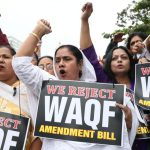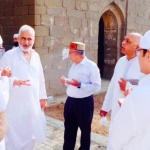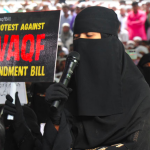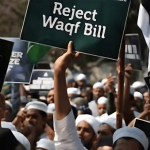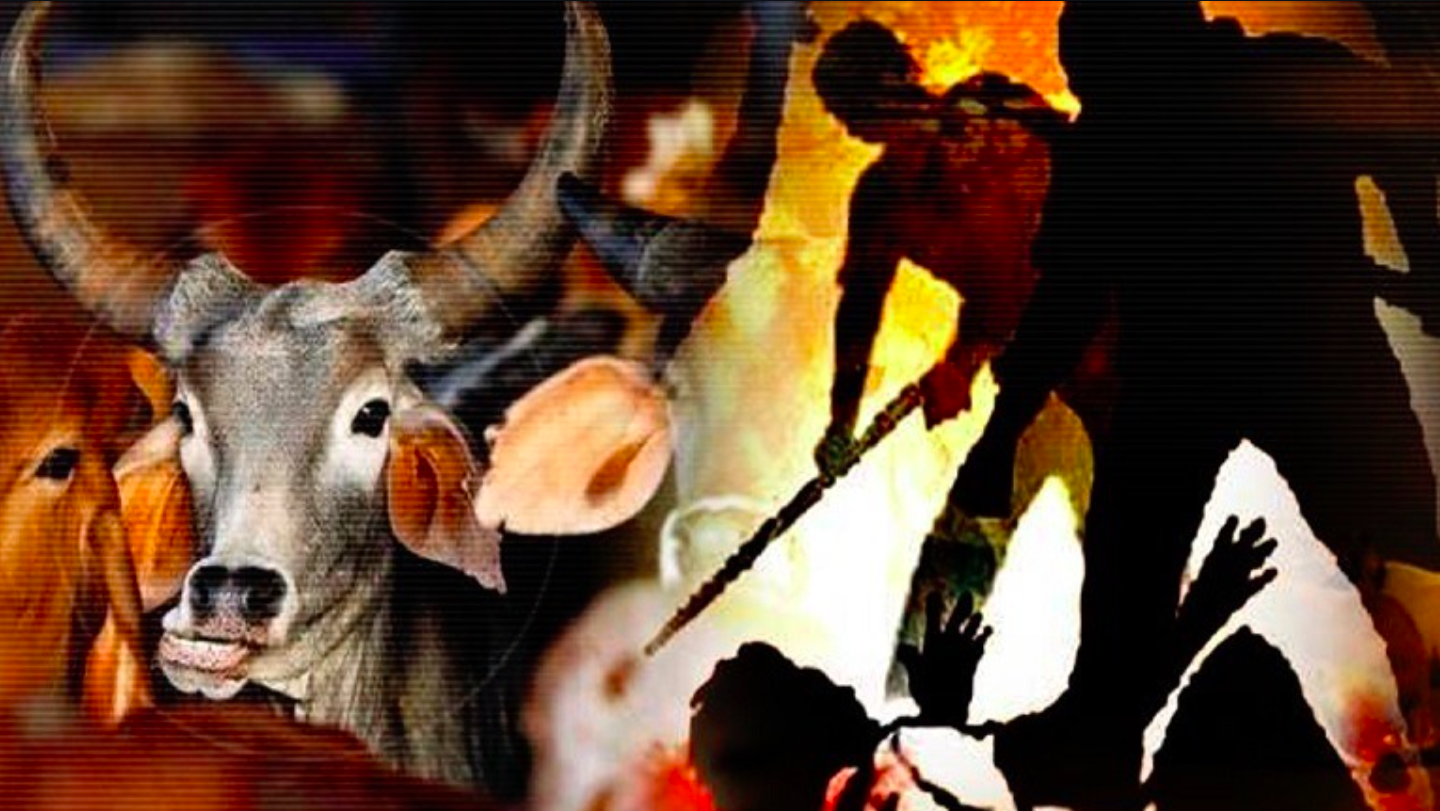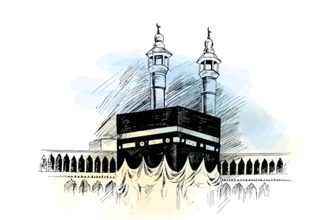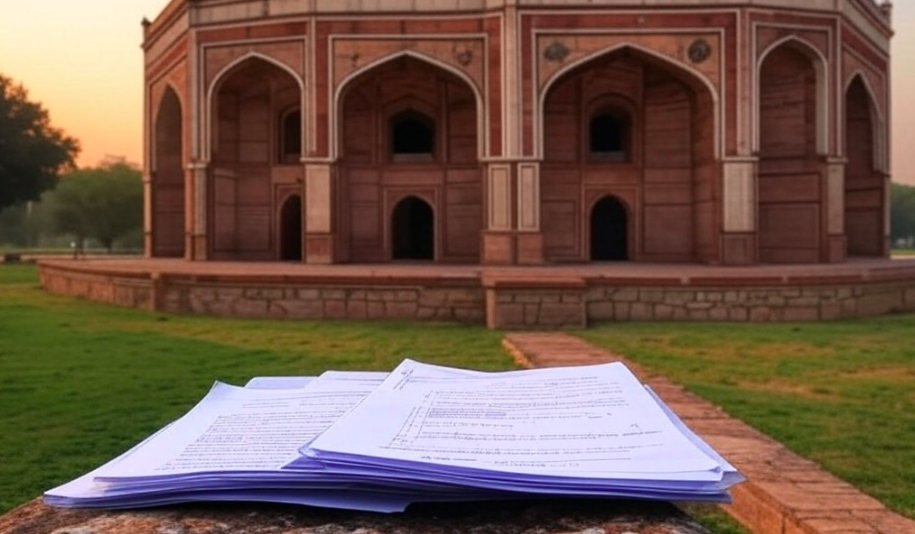Badre Alam & Sanjay Kumar for BeyondHeadlines
The tragic death of Rohith Vemula at Hyderabad Central University (HCU) has created a strong public outrage, followed by a wide-range of academic discourse among scholars belonging to different social groups. A section of the progressive scholars has argued that the ‘social paradox’ has now become sharp between radical Ambedkarites and hardcore Hindutva forces. And it is interesting to note that for the first time, all progressive sections of society, liberal-Left, radical Dalit student movement and religious minorities, especially Indian Muslims, have unequivocally opposed Rohith’s untimely death.
In short, one could rightly argue that Rohith’s episode, in fact, created ‘Pan-India reaction’ and one cannot deny the fact that this movement has enough ‘potential’ to fight against the threat of Hindutva juggernaut.
As the news about Rohith Vemula Suicide came out in the public domain, BJP leaders and Ministers started making Casteist and communal statements rather than expressing genuine concern. To highlight the statements of BJP minister, EPW editorial rightly observed:
“Union Minister of State for Labour and Employment, claiming that the University of Hyderabad had “become a den of casteist, extremist, and anti-national politics,” and that the ABVP activist was beaten for disagreeing with ASAs [Ambedkar Students Association] protests against Yakub Memon’s hanging.”[1]
In a similar vein, The Hindustan times reported, ‘BJP leader Kailash Vijayvargiya sparked a row on Sunday by casting doubts over the suicide of Dalit scholar Rohith Vemula, while he claimed the Hyderabad Central University student used to offer prayers for terrorist Yakub Memon and organised beef parties[2]’.
In contrast to BJP-RSS-ABVP combine views, for the Ambedkarites and the progressive section, Rohith ‘social death’[3] must be considered as an ‘institutional murder’. He was compelled to commit an act like suicide, simply because, being an active member of a radical Dalit student wing like time and again strongly condemned and registered protests on several human rights issues such as Yakub Memon’s hanging, Muzaffarnagar riots, AFSPA, death penalty, beef ban etc. which was strongly reacted by communal outfits like ABVP and a right wing forces.
Having made these points, in what follows, the arguments will be confined mainly on how Dalits as a group, experience caste-based discriminations in the institutions of higher learning. While doing so, it is important to first provide a strong critique of Hindutva views on ‘Dalit questions’. Here an attempt has been made to critique RSS-VHP-BJP combine views from the perspective of ‘social justice’ and in light of academic insights provided by the Dalit-Bahujan intellectual’s particularly on ‘lived experiences’ of Dalits in the Public universities.
Moreover, here an attempt has been also made to problematise the so-called ‘liberal institutionalists’ views vis-a-vis Dalit’s everyday experiences in the realm of higher education. To put it briefly, a prominent section of liberal and secular public intellectuals like Andre Beteille and others have consistently argued that the ‘merits’ and ‘academic excellence’ must be ensured in the public institutions like universities. However, here it is seen that on the pretext of the so-called ‘Merits and ‘Academic performance’, they indirectly end up reinforcing upper caste domination, in the institutions of higher learning.
Finally, we argue that in contrast to some scholar’s views, it is empirically wrong to say that Hindutva politics has become more accommodative and provides democratic space for articulating ‘Dalit question’ in the public domain. To substantiate the arguments further, Rohith Vemula’s ‘social death’ could be a case in point here. To put briefly, on the basis of earlier studies, here it could be argued that unlike the so-called liberals views, ‘Radical and assertive Ambedkarites’ understanding on ‘Dalit questions’ and ‘Social Justice’ must be taken seriously for ‘social emancipation’ of untouchables.
Public institutions and Social Justice
Generally speaking, it is considered the fact that university as a public institution has often been understood as liberal and secular space. Yet, on the basis of some empirical and scholarly studies done by Dalit- Bahujan intellectuals and others; it would not be wrong to say that majority of these public institutions in India have in fact maintain and more often perpetuate upper caste Brahmanical values, which often generate tension and sometimes result in an uneasy relation with lived experiences of lower castes and Dalits.
Historically speaking, secular-minded social historians have rightly shown that India’s Dalits are one of the most oppressed groups and victims of social injustice since ancient times. And the fact cannot be denied that the outcastes and the untouchables lived an ‘inhuman life’ and experienced ‘social stigma’ and caste-based discriminations in all walks of life. Due to their low status in Hindu ‘social order’, Dalits, as a group deliberately kept outside from the domain of modern and secular education.
Yet, surprisingly, liberal intellectuals like Andre Beteille and others have observed that although Indian society is deeply hierarchical and divided on the basis of caste and communities; but unlike universities of past, Indian universities have accommodated these different castes and communities in post-independent democratic India. ”.As Beteille says,
“In contrast to the universities of past, which were socially exclusive, the modern universities is socially inclusive. The Indian university admits students and appoints teachers generally without consideration of race, caste, creed or gender.[4]”
In addition to this, he further observed that ‘academic excellence’ and the so-called ‘merits’ must be insured and ‘academic discriminations’ must not be allowed in the public universities. To elaborate this, he writes,
“In a university, the objective of social inclusiveness cannot be promoted without consideration of success or failure in academic performance. In looking at our universities today, we cannot wish out of existence the real and pervasive tensions between the demands of social inclusiveness and those of academic excellence'”[5].
To put differently, most of the liberals including Béteille seem to argue that in universities ‘politics of identity’ based on primordial identities such as caste must not be allowed and the so-called‘merits’ and ‘academic excellence’ need to be underlined seriously.
Institutional Discriminations
To highlight the institutional discrimination, a number of studies have been done by scholars, that have clearly exposed the questions of caste-based discriminations and practices of untouchability widely noticed in Indian society.
In this context, a noted scholar, Prof. Sukhadeo Thorat and others in their recent study have clearly demonstrated that caste discrimination and ‘social prejudice’ against Dalits are widely seen in the elite institution like AIIMS.As Thorat committee observed that more than 80%of SC/ST student’s face various form of social discrimination either directly or indirectly in AIIMS. To highlight the systemic and systematic caste-based institutional discrimination, EPW editorial writes,
“What else can explain the fact that no government or university administration has taken any initiative to implement the recommendations of the Thorat Committee, which a decade ago had been constituted to look into suicides by Dalit students in the All India Institute of Medical Sciences, New Delhi, and had documented systematic and systemic discrimination.’’[6]
Moreover, Thorat and others have recently in their studies demonstrated that untouchables are still discriminated in both market and non-market institutions. As Thorat and others correctly observed:
“Empirical evidence shows that traditional restrictions faced by the erstwhile untouchables in the markets and in non-market institutions have continued as remnants of the past in multiple spheres thereby preventing the SCs and STs from accessing various opportunities and facilities”.[7]
In a more systematic manner, a prominent scholar, Samson K. Ovichega in his book Faces of discrimination in higher education in India has rightly shown that caste based discrimination is generally practiced by upper castes in the academic sphere. As Ovichega observes, ‘caste-based discrimination is prevalent within the academic sphere of the university. It considers the hegemonic dominance of high-caste non-Dalit faculty members within the university’s administration, management and classrooms, and the role this might play in ‘othering’ Dalit members of staff.[8]
In a similar way, Dhramaraj Kumar, a research scholar and social activist at JNU, has nicely portrayed this caste-based discrimination prevalent in institutions of higher learning. As he writes, ‘caste, creed, colour, gender and religious bias have a huge role to play in the making of our modern institutions. Among all kinds of bias, caste is more widely prevalent in all most all cases’[9].
Further Kumar observes, ‘the life of Dalits on a university campus is a grim reality. Somehow it does not go well with the high caste establishment’[10].
Besides, theoretical studies done by scholars, there are several government reports, which have also clearly shown that caste atrocities and practices of untouchability against India’s Dalits have further increased.
According to a survey conducted by National Council of Applied Economic Research (NCAER) and University of Maryland, the US, which was subsequently published in outlook magazine in May 2015, found that ‘one in every four Indian, admits of Practicing Untouchability. For instance, in Haryana alone, 21 Dalits were murdered in 2014. And crimes against SCs rose to 47,064 in 2014 from 39,408 in 2013.The rate of crime is the number of crimes reported against SCs per one lakh of their population. In 2014, the rate of crime against Dalits was 23.4 and in 2013, it was 19.57. NCRB statistics show that 2,233 Dalit women were raped in 2014.In a similar vein, the National Crime Records Bureau (NCRB), in their new statistics show those crimes against Dalits, or Scheduled Castes (SCs), rose 19 percent last year, on top of a 17 percent increase in 2013.
To sum up the main arguments so far, it could be clearly argued that the claims made by some distinguished sociologists like M.N. Srinivas and Andre Beteille are far from the truth that caste and practices of untouchability are dying. As Beteille elsewhere observed that, caste has been dying in all walks of life barring political sphere[11].
Concluding Remarks
To conclude here, on the basis of empirical studies done by Dalit-Bahujan intellectuals and academicians, it is not wrong to say that PM Modi’s tall claims of “Sabka Sath Sabka Vikas”, on which plank he was voted to power, now stand clearly exposed. And after going through the painfully lived experiences and looking at the institutional plight of India’s Dalits, one could argue that ‘Caste-based discrimination’ have increased and even reflected in the domains of higher education.
It is to be noted that even more emphatically. Ambedkar had predicted the menace of Hindutva ideology vis-a-vis Dalits, long before the independence. In this regards, he writes, “How long shall we continue to live this life of contradictions? How long shall we continue to deny equality in our social and economic life? If we continue to deny it for long, we will do so only by putting our political democracy in peril’’[12]
Keeping the aforementioned arguments into serious consideration, one could argue that the claims made by RSS-BJP combine need to be strongly critiqued from the perspective of ordinary Dalits ‘lived experiences’. Moreover, the arguments of the so-called some Indian liberals are also unpersuasive with regards to Indian universities and its role in promoting the culture of ‘democratic citizenship’ and social justice vis-a-vis oppressed groups. Therefore, it is high time to search for more radical and egalitarian ‘conception of social justice’ which is widely found in the writings of Dalit-Bahujan intellectuals like Phule, Periyar and Ambedkar.In this context, noted social scientist, Professor Gopal Guru has rightly demonstrated his views in the following words;
“In the Indian context, there are basically two deferent traditions, orthodox and heterodox which offer definite philosophical cues about social justice. The heterodox tradition tried to define social justice through radical interrogation of the caste system and caste related social hierarchies that sustain the brahminical notion of justice. The heterodox tradition involving theory and practice of social justice from the part of India’s intellectual heritage represented by Phule and Ambedkar”[13].
In short, here it is suggested that now it is a high time to revisit the writings of Dalit- Bahujan intellectuals with respect to Indian subaltern groups. while doing so, in our views, it will help us to democratise the institutions of higher learning and achieve the goals of ‘Social Justice’ for oppressed social groups and, therefore, prevent further ‘Social death’ like Rohith in future.
Badre Alam (badredelhi@gmail.com) is Ph.D, Research Scholar at Political Science Department, University of Delhi.
Sanjay Kumar (sanjayatws@gmail.com) is Ph.D Research Scholar at Academy International Studies, Jamia Millia Islamia; New Delhi.
———————————————————————————————
[1] See, ‘Death by Discrimination’, in Economic& Political Weekly, January 23, 2016.
[2]See,‘BJP leader Kailash Vijayvargiya casts doubt over Rohith Vemula’s death’, in Hindustan Time,Jan31,2016, URL: http://www.hindustantimes.com/india/bjp-leader-kailash-vijayvargiya-casts-doubt-over-rohith-vemula-s-death/story-SaORnjl7Fxgb3VSrPlnPXL.html (Accssed on Feb. 11, 2016).
[3]To explain the term social death, a noted Social scientist Prof. Gopal Guru writes, ‘in the Indian context, social death gets defined in terms of the social stigma that Dalits, particularly students, are forced to silently suffer. See for details, Gopal Guru, ‘A Tragic Exit from Social Death’ in Outlook, Feb 1, 2016.
[4] André Béteille, ‘Universities as Public Institutions’, Economic & Political Weekly, 40 (31), July 30, 2005, p-3379.
[5]André Béteille, ‘Universities as Public Institutions’, Economic & Political Weekly, 40 (31), July 30, 2005, p-3380.
[6] See, ‘Death by Discrimination’, in Economic& Political Weekly, January 23, 2016.
[7]Sukhadeo, Thorat and et al, ‘Prejudice against Reservation Policies: How and Why’? Economic& Political weekly, Feb 20, 2016,p-65.
[8]Samson K. Ovichega, ‘’Faces of Discrimination in Higher Education in India: Quota policy, social justice and the Dalits’’, Routlege, London and New york, 2015, p-.( xii).
[9]See Dharama raj Kumar, ‘Rihith Vemula : a saga of the inheritance of loss’, the Milli Gazette, 16-29 February 2016,p-2.
[10] See Dharama raj Kumar, ‘Rihith Vemula : a saga of the inheritance of loss’, the Milli Gazette, 16-29 February 2016,p-2.
[11] Andre Beteille, ‘India’s destiny not caste in stone’ in The Hindu, 10March, 2012.
[12] Sanjay Hegde, the Hindu news Paper, A nation builder’s pride of place, April 14, 2015
[13]Gopal Guru (2013) Social Justice, the oxford companion to politics in India, New Delhi. OUP: p.362


